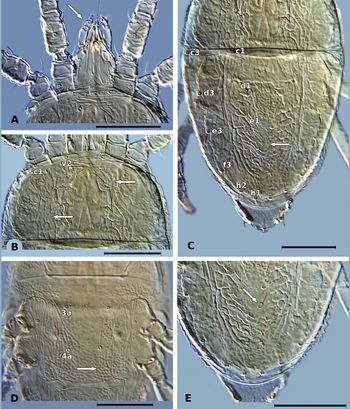Brevipalpus yothersi
| Literature database |
|---|
| 25 articles sorted by: |
| • year (descending) |
| • research topics |
| • countries/regions |
| • host plants |
| • list of natural enemies |

Author(s): E.J. Sánchez-Velázquez, M.T. Santillán-Galicia, V.M. Novelli, M.A. Nunes, G. Mora-Aguilera, J.M. Valdez-Carrasco, G. Otero-Colina and J. Freitas-Astúa
Source: PLoS ONE 2015, 10(7), art. e0133861

Author(s): Aline Daniele Tassi, Laura Cristina Garita-Salazar, Lilian Amorim, Valdenice Moreira Novelli, Juliana Freitas-Astúa, Carl C. Childers and Elliot W. Kitajima
Source: Experimental and Applied Acarology, 2017, 71 (3), p. 230
Brevipalpus yothersi Baker, 1949
This flat mite is widely distributed and has been recorded from tropical and subtropical parts of Asia, Australia, Africa and the Americas. It has been also found in Spain. It has a very large host range, including citrus, tea, coffee, peach, coconut, apple, pear, olive, fig and grape. Further it is an important vector of the Citrus leprosis virus C, especially in South America.
The transmission of this virus is considered to be the main economic impact of the mite, mainly in South America where the mite and virus disease occur together. Other effects of mite infestations on citrus are early fall of fruits and a reduction in their commercial value. The mite does not spread very easily and new infestations occur mainly on neighbouring trees.
This species is very similar to Brevipalpus phoenicis and has been often synonymized with that species until 2015. It is now treated as a member of the Brevipalpus phoenicis species group, being much more common than Brevipalpus phoenicis s.s.. Many records of B. phoenicis s.l. appear to apply to B. yothersi.